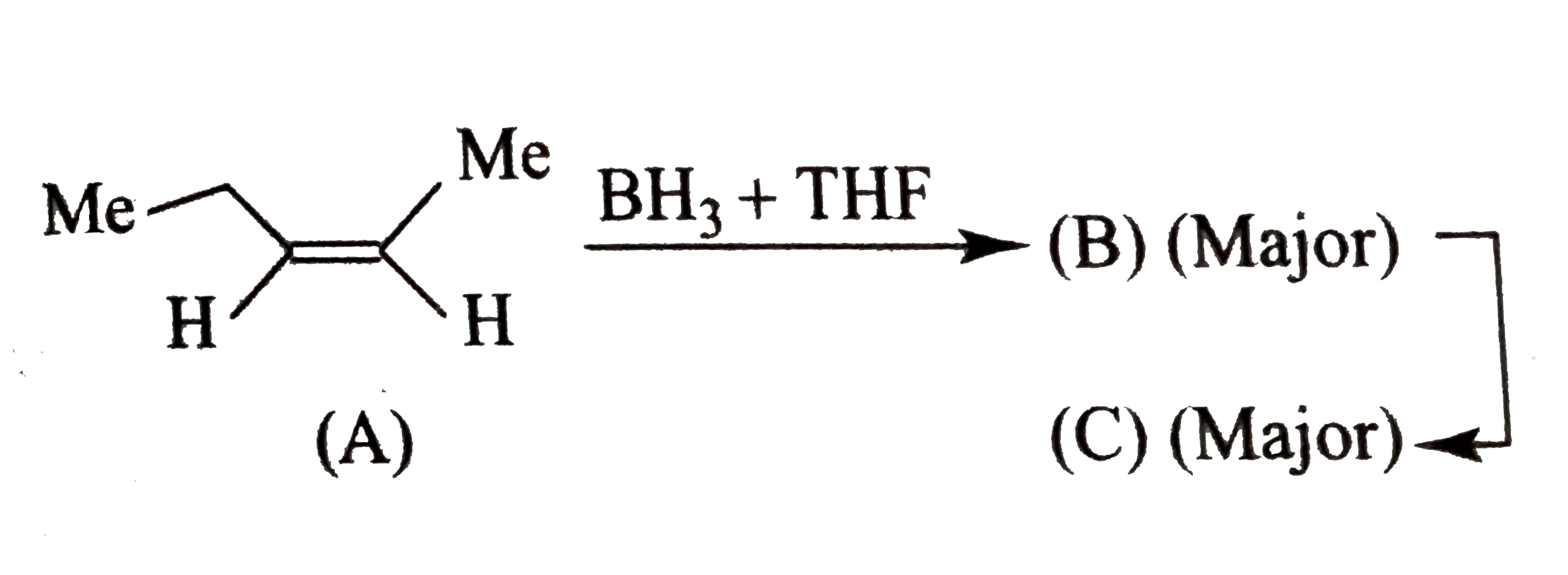2(C6H10O5)nstarch+H2ODistance−−−−→nAH2O−−→2nB
A and B in given sequence of reactions, respectively is
Maltose, D-Glucose
Lactose, D-Glucose
Sucrose, D-Glucose
Maltose, fructose
The correct Answer is:A
To solve the question regarding the hydrolysis of starch, we can break down the process step-by-step.
1. Identify the Reactant: The reactant given is starch, which has the general formula (C6H10O5)n. This indicates that starch is a polysaccharide made up of multiple units of the disaccharide.
2. Hydrolysis of Starch: When starch undergoes hydrolysis, it reacts with water (H2O) in the presence of an enzyme. The enzyme that catalyzes the hydrolysis of starch is diastase. The reaction can be represented as:
(C6H10O5)n+nH2Odiastase−−−−→n maltose
Here, maltose is a disaccharide formed from the hydrolysis of starch.
3. Formation of Maltose: The product formed from the hydrolysis of starch is maltose. Therefore, in this step, we have:
- A = Maltose (n moles of maltose).
4. Further Hydrolysis of Maltose: The maltose produced can undergo further hydrolysis in the presence of another enzyme called maltase. This reaction can be represented as:
n maltose+nH2Omaltase−−−−→2n glucose
Here, each maltose molecule is hydrolyzed to produce two glucose molecules.
5. Formation of Glucose: After the hydrolysis of maltose, we get glucose as the final product. Therefore, in this step, we have:
- B = Glucose (2n moles of glucose).
Conclusion:
Thus, the respective products A and B in the given sequence of reactions are:
- A = Maltose
- B = Glucose
Final Answer:
A and B are Maltose and Glucose, respectively.
(C6H10O5)n+nH2Odiastase−−−−→n maltose
Here, maltose is a disaccharide formed from the hydrolysis of starch.
- A = Maltose (n moles of maltose).
n maltose+nH2Omaltase−−−−→2n glucose
Here, each maltose molecule is hydrolyzed to produce two glucose molecules.
- B = Glucose (2n moles of glucose).
Thus, the respective products A and B in the given sequence of reactions are:
- A = Maltose
- B = Glucose
A and B are Maltose and Glucose, respectively.
Topper's Solved these Questions
- BIOMOLECULESBOOK - AAKASH INSTITUTE ENGLISHCHAPTER - BIOMOLECULESEXERCISE - EXERCISE (ASSIGNMENT) SECTION - C Previous Years Questions
25 Videos
- BIOMOLECULESBOOK - AAKASH INSTITUTE ENGLISHCHAPTER - BIOMOLECULESEXERCISE - EXERCISE (ASSIGNMENT) SECTION - C Previous Years Questions (Questions asked Prior to Medical Ent. Exams. 2005
33 Videos
- BIOMOLECULESBOOK - AAKASH INSTITUTE ENGLISHCHAPTER - BIOMOLECULESEXERCISE - EXERCISE (ASSIGNMENT) SECTION - A Objective Type Questions
50 Videos
- AMINES BOOK - AAKASH INSTITUTE ENGLISHCHAPTER - AMINES EXERCISE - Assignment Section -J (Aakash Challengers Questions)
9 Videos
- CHEMICAL BONDING AND MOLECULAR STRUCTURE BOOK - AAKASH INSTITUTE ENGLISHCHAPTER - CHEMICAL BONDING AND MOLECULAR STRUCTURE EXERCISE - Assignment Section J (Aakash Challengers Questions)
10 Videos
Similar Questions
Knowledge Check
H−C=C−HHgSO4−−−→H2SO4(A)(1)NH3+HCN−−−−−−−−−→(2)H3O⊕(B), Product (B) of given reaction is :
AGlycineBAlanineCvalineDLeucineFor a reaction, 2NO+2H2→N2+2H2O, the possible mechanism is
NO⇔N2O2
N2O2+H2Slow−−→N2O+H2O
N2O+H2Ofast−−→N2+H2O
What is the rate law and order of the reaction?ARate = [N2O2], order = 1BRate = [N2O2][H2], order = 2CRate = [N2O2]2 order = 2DRate = [N2O2]2[H2], order = 3
C6H5N2ClCu2(CN)2−−−−−−→ Pyridine AH3O+−−−→B . Here [B] is
View SolutionC6H5NH2NaNO2/HCI−−−−−−−−→0∘C(A)H3PO2/H2O−−−−−−−→(B) the compound (B ) is :
View Solution H2O2+ΘOH
H2O2+ΘOH
B and C are:
View SolutionA+H2O→NaOH
AO2−−−→400∘CBH2O−−−→at25∘CNaOH+O2,
B is used for oxygenating in submarines A and B are respectively.
View SolutionA+H2O→NaOH
AO2−−−→400∘CBH2O−−−→at25∘CNaOH+O2,
B is used for oxygenating in submarines A and B are respectively.
View SolutionCH3−C≡NH2O/Δ−−−−→(A)H2O/H+−−−−−→(B)(A)and(B) respectively are
View Solution
